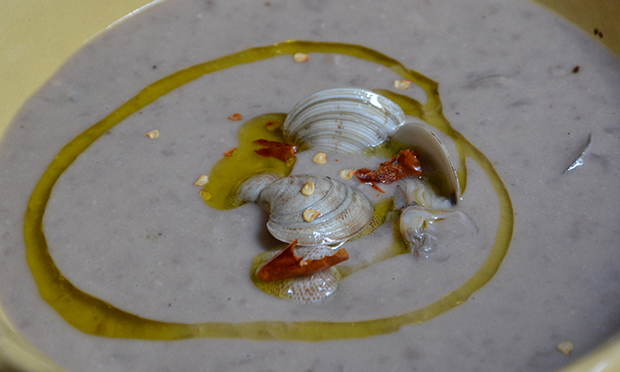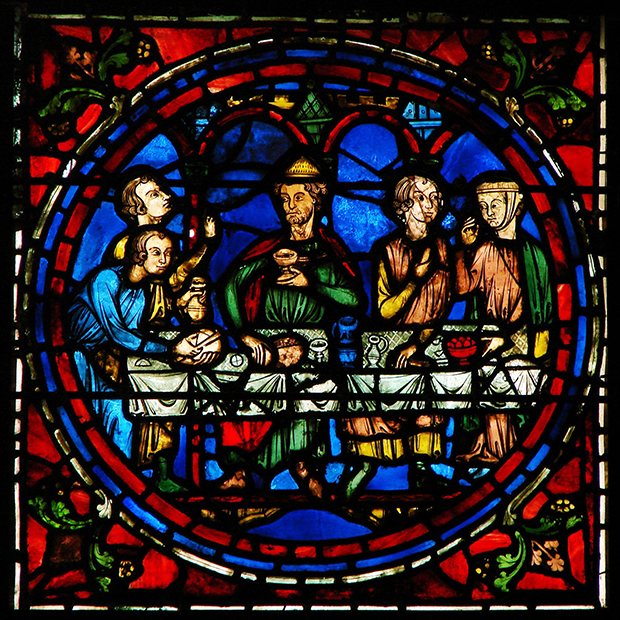The Joys of Sludge

Photograph: Rachel Roddy
Pure White & Deadly is the title of a book by John Yudkin, published in 1972, about the perils of eating sugar.
Yudkin was born in Hackney to Jewish parents who had fled the Russian pogrom in 1905. He studied at Hackney Downs School, went on to do research at Cambridge, and later became a distinguished professor of nutrition at Queen Elizabeth College in London.
His research showed that too much refined sugar causes obesity, heart disease and diabetes, but in the murky world of nutritional politics of the 1960s, fat was the deadly enemy, and a popular crusade against it was launched on the basis of some rather dodgy evidence, linked to that dubious myth, the Mediterranean Diet.
Yudkin’s alternative message, that the real villain was sugar, was rubbished by both the international food industry and his colleagues, and it took another generation of research to get the truth across.
“Holy crap!” said Robert Lustig, quoted by Ian Leslie in the Guardian’s ‘The Sugar Conspiracy’ in 2016. “This guy got there 35 years before me.”
Lustig promotes a cheerfully aggressive diet which vindicates Yudkin’s position, based on lots of animal fat, dairy products and eggs, while denouncing sugar as the real villain.
Back in the Middle Ages, sugar consumption was unlikely to do us much damage. It was an expensive substance used in small quantities as a medicine or a condiment, and it was considered good for you, not harmful, sold at the pharmacy in hard cones of rock-like gritty crystals, mud-coloured rather than the pure white refined sugar we are used to. In elite kitchens it was used as a spice and flavour enhancer rather than a sweetener, and it was often a prestigious ingredient in white dishes that were by their nature expensive to make.

Pure white food was hard to achieve and costly. The everyday food of ordinary folk was sludge-coloured, like their clothing. A frugal stew or porridge made from dried peas, broad beans, chickpeas or lentils, boiled up with roots and grains, was dreary to look at but delicious to eat with the addition of pungent herbs and garlic, and maybe some olive oil or the carefully hoarded fat from salted and cured pork, or a bit of cheese.
In the Guardian food magazine a few weeks ago, the usual colour photographs of brilliantly innovative and exquisitely styled recipes, all rather samey and strident, were mitigated by Rachel Roddy’s ‘soft and gentle beige bean soup’, a magnificent bowl of cannellini beans reduced to a pale gray sludge, adorned with only a zigzag of olive oil and a couple of clam shells – balm for sore eyes and a jaded palate, as we can see in Rachel’s photograph.
Her recipe for bean and clam soup can be found in the Guardian (bit.ly/35WWz55) and on her website racheleats.wordpress.com.
We could compare this with the costly white medieval biancomangiare (blancmange to us, ugh), using almond milk, made from shelled and skinned almonds, crushed in a mortar and squeezed through a fine cloth sieve, pounded up with the white meat of chicken breasts previously cooked in a colourless broth lightly flavoured with cinnamon, stirred lightly together with a little white sugar and delicately perfumed with rosewater, served gleaming on a golden dish, a deliberate contrast to the glowering black food we met in another medieval dish, peposo.
This pallid, unearthly white dish would have been displayed alongside brightly coloured food, glowing with the vivid reds, blues, greens and yellows of a stained glass window.
The bible story of the wedding at Cana, where, when they ran out of drink, Jesus turned water into wine, has always been a popular subject, and in a stained glass window in Chartres Cathedral we can see not so much the details of the feast as the brilliant colours of the surroundings, and the clothing of the guests.
This blaze of colour was expected in Medieval elite banquets, where cooks used natural substances, expensive saffron for yellow, herbs like mint, parsley and coriander for green, sanders, red sandalwood for red, and blue obtained from various berries. Pure white and deep black made a perfect foil for them, and sludge could be brightened up with a scattering of pomegranate seeds, rose petals, sprigs of herbs, black or green olives, and slices of bitter orange or lemons.
We can do this too, tarting up a dish of hummus with a scattering of chopped red peppers, coriander leaves and blue borage flowers. No need for trendy foams and dribbles or expensive styling, when we can transform a dull dish of virtuous grains or pulses into a bejewelled bowl of gothic gluttony.
But now, with the lockdown upon us, is not the time to wallow in fancy work, so next month we might look at everyday food in the past, and how tasty and healthy, and unhealthy, it was.
